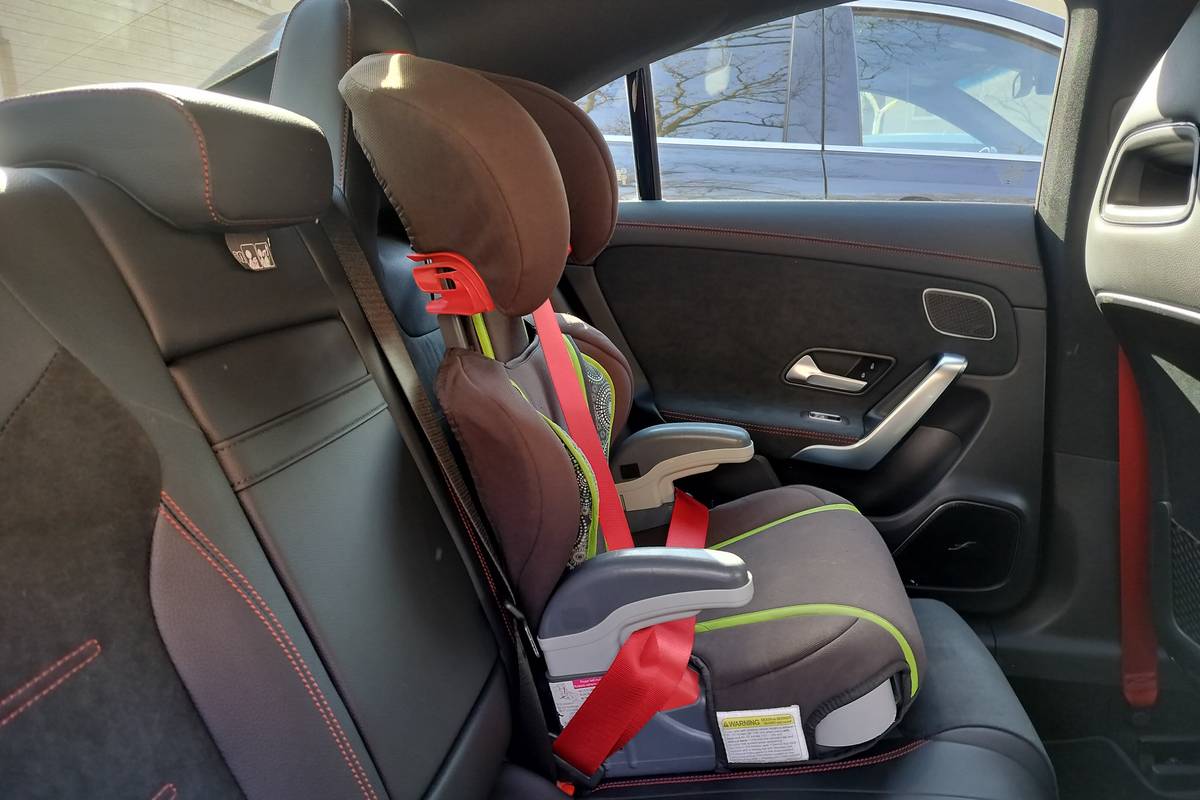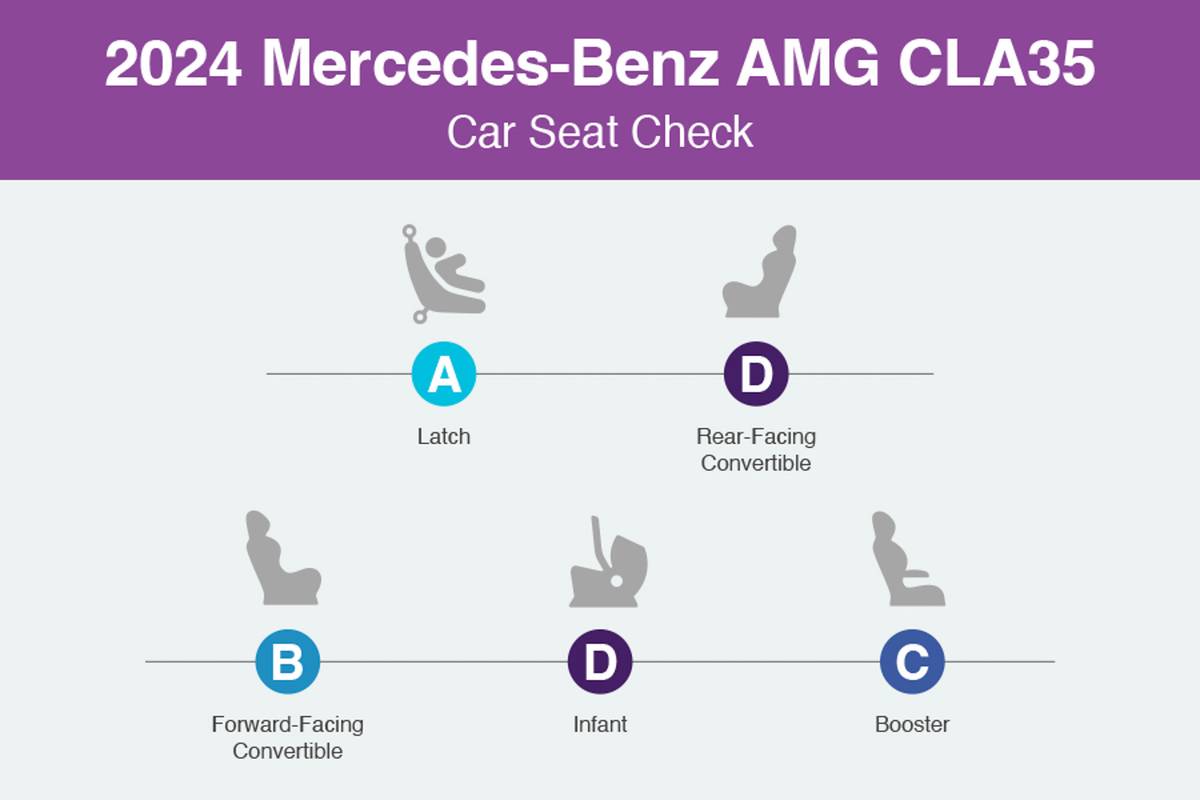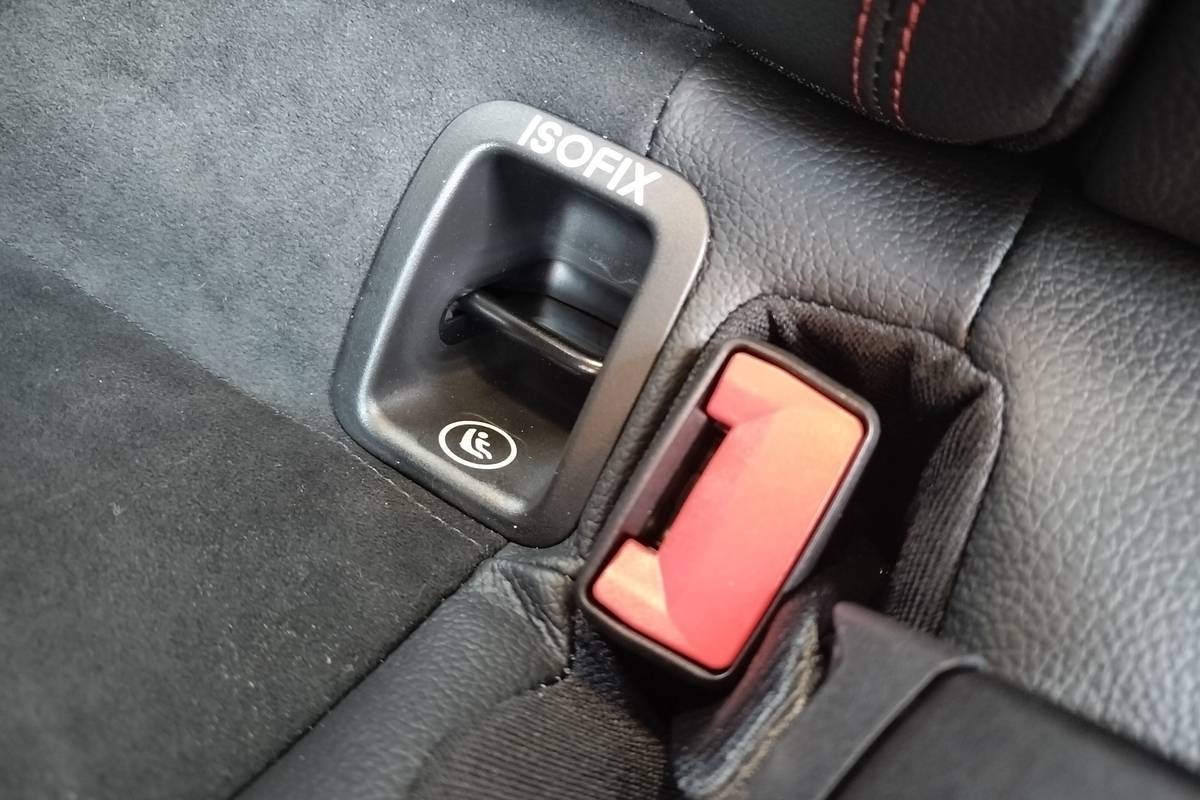How Do Car Seats Fit in a 2024 Mercedes-AMG CLA35?


The verdict: The 2024 Mercedes-Benz CLA Coupe (which has four doors but a sloping coupelike roofline) comes in a couple of different flavors. For this Car Seat Check, we tested the sport-oriented AMG 35 version, which sits between the base CLA250 and more performance-oriented AMG 45 S. The compact car’s exposed lower anchors made connection easy, but we struggled with car-seat installation because of its lack of rear legroom and fixed head restraints.
Does it fit three car seats? No.
Take a look at how the Latch system and each car seat scored below in our Car Seat Check of the 2024 Mercedes-AMG CLA35.
Related: Search Car Seat Checks

Latch: Grade A
The sedan’s two sets of lower anchors are exposed for easy access and connection. Three top tether anchors sit under the rear shelf; they’re also easy to find and use.
Infant Seat: Grade D
This seat was easy to install with the Latch anchors, but backseat room and front-passenger legroom were major issues. We had to move the front-passenger seat as far forward as it would go and adjust the recline angle to a very upright position. Our 5-foot-6-inch front passenger was very uncomfortable, and her knees were sitting against the glove box.
Rear-Facing Convertible: Grade D
Again, the installation was easy, but room was a problem for our front passenger, who was very uncomfortable in front of the rear-facing convertible.
Forward-Facing Convertible: Grade B
In forward mode, the convertible was easy to install via the lower anchors, but we struggled with fit due to the fixed head restraint, which pushed the car seat off of the seatback; it should fit flush against it. According to the owner’s manual, the top tether strap should be routed around the head restraint on the side closest to the door.
Booster Seat: Grade C
We again had fit issues due to the fixed head restraint affecting how the booster sat against the seatback. The booster also lost a grade because of the sedan’s buckles; they’re very short and sit flush with the seat bottom cushion, so they’ll likely be tough for kids to grasp and use independently.

About Cars.com’s Car Seat Checks
Editors Jennifer Geiger and Jennifer Newman are certified child safety seat installation technicians.
For the Car Seat Check, we use a Chicco KeyFit 30 infant-safety seat, a Graco Contender 65 convertible seat and Graco TurboBooster seat. The front seats are adjusted for a 6-foot driver and a shorter passenger. The three child seats are installed in the second row. The booster seat sits behind the driver’s seat, and the infant and convertible seats are installed behind the front passenger seat.
We also install the forward-facing convertible in the second row’s middle seat with the booster and infant seat in the outboard seats to see if three car seats will fit; a child sitting in the booster seat must be able to reach the seat belt buckle. If there’s a third row, we install the booster seat and a forward-facing convertible. Learn more about how we conduct our Car Seat Checks.
Parents should also remember that they can use the Latch system or a seat belt to install a car seat, and that Latch anchors have a weight limit of 65 pounds, including the weight of the child and the weight of the seat itself.
Cars.com’s Editorial department is your source for automotive news and reviews. In line with Cars.com’s long-standing ethics policy, editors and reviewers don’t accept gifts or free trips from automakers. The Editorial department is independent of Cars.com’s advertising, sales and sponsored content departments.

News Editor Jennifer Geiger joined the automotive industry in 2003, much to the delight of her Corvette-obsessed dad. Jennifer is an expert reviewer, certified car-seat technician and mom of three. She wears a lot of hats — many of them while driving a minivan.
Featured stories




